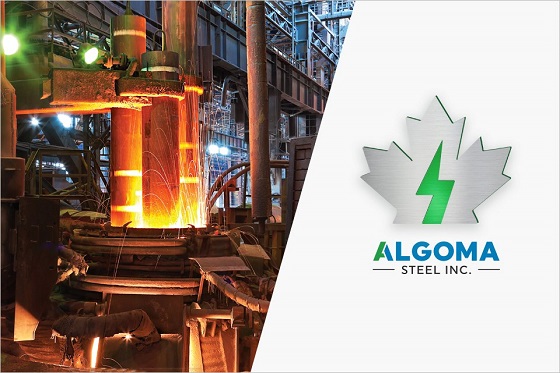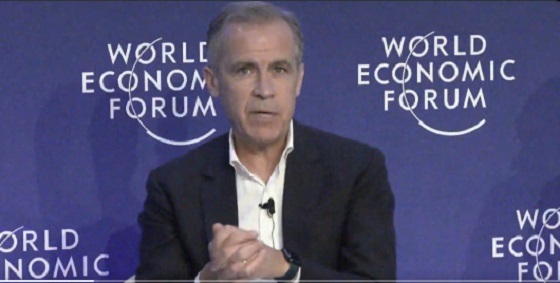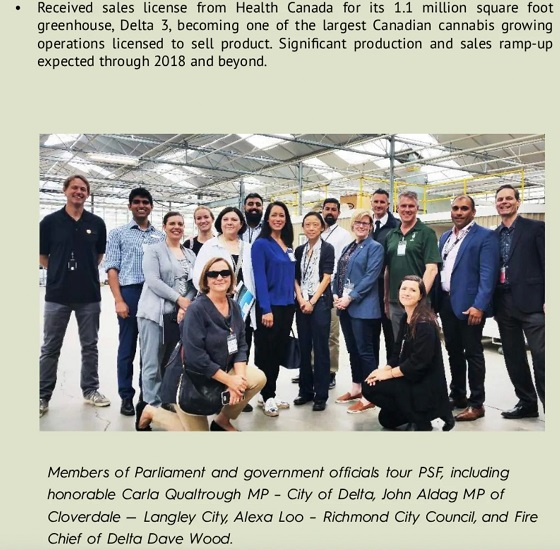Opinion
MAKICHUK: Why we seem to have lost our way in the wilderness

Shawnee chief Tecumseh
It is not too late to change, and think of others in these troubling times
“When you rise in the morning, give thanks for the light, for your life, for your strength. Give thanks for your food and for the joy of living. If you see no reason to give thanks, the fault lies in yourself.” — Shawnee warrior Tecumseh
Is it TV? Is it the monstrous social media? Is it the pressure to do well, in the modern world?
The pressure to, as the saying goes, have more toys when you die?
Where did it all go wrong? And is it too late to change.
Are we doomed, to be uncaring and selfish?
Will our children find it in their hearts, to help their fellow man?
I remember back in the day, working at the SUN. Slaving like an SOB for a shit salary.
There was a guy who worked on the big camera in the back shop.
It was a gigantic camera that took pictures of every page we sent out. That resulted in a negative, which was then made into a plate, that went onto the press.
Simple, right?
One day, Ben came around to show the folks in the newsroom, a piece of paper in his hand. Waving it around in triumph.
It was his boast — a refund cheque from the Canada Revenue Agency, for more than $20,000. He was showing it off. Bragging.
Rubbing it, in our faces.
He had some kind of illegal immigrant scam going, I suspect. Something to do with a business. I don’t know, and I don’t wanna know.
Anyway, I waited for him, like a spider in a web.
Just waiting for him to come to me, which he did.
He laughed as he showed by the government refund cheque. And, indeed, it was more than 20K.
I said, “Ben, that is impressive … it is … but you would impress me more, if you gave that to a charity.”
His face froze. The smile was still there, but he had nothing to say, and moved on.
I was hoping to leave him with a strong impression. An impression of shame.
Because I thought what he was doing was pure bullshit.
If you are getting that kind of money from the CRA, you’re best to shut the fuck up about it. Not show it around your office, and brag about it.
And I bloody well meant what I said. Because I know people who make big money, and never say a word to anyone.
I even know one guy on the province’s Sunshine List, who made so much money, he had to buy a big house to impress his co-workers.
His small bungalow, where they lived and raised their children, had proved an embarrassment! LOL!
He was PO’d, but he had no choice. They had to buy a mansion in the country.
All paid for, by the Alberta government, by the way. Your tax dollars at work.
Fast forward to last week.
Sitting on a bench, outside the Co-op liquor, it was nice and sunny, so I decided to light up a cigar. A cheap Cubano, which I smoke occasionally.
A young couple struggled with their child, who was screaming his head off. He didn’t want to leave a children’s place called Cloud Land.
But the cloud had turned nasty. I waved at the Dad, yelling, “Don’t worry, it gets better.” He smiled, and waved back, while the wife scowled at me.
It was clear, they were in over their heads, and didn’t know what to do.
Two ladies approached me. Middle aged but youngish, and dressed conservatively.
One lady stopped, said, “Can I buy you a bottle?”
I laughed, and said “No, I’m fine.”
They thought I was a homeless person, LOL!
I hadn’t shaved, and my hair was long. And yeah, I probably did look pretty rough.
I got up and we walked into the liquor store, and we chatted a bit.
She and her friend, were First Nations! She was going to Las Vegas for the first time, and was excited about it.
And then we parted ways.
But man, that just blew me away. There are good folks in this town, my friends.
But they are real people, not the big oilpatch execs, driving Aston Martins, Ferraris and Porsches to work and back.
Those days, of giving back to the community, are long over. Long, long over.
Yes, the movers and shakers go to fancy charity dinners, and virtue signal that they are doing the right thing.
But really and truly, they don’t give a shit.
You won’t see these folks down at the Blues Can, watching Tom Phillips and the DT’s, performing the best country in Western Canada.
Or volunteering to an animal rescue group, to helping save wild animals and nurse them back to life.
Other than Mikael Backlund and his wife Frida, have you seen another Calgary Flame give anything back to the community? And I don’t mean events they are forced to go to, I mean on their own.
Same with Edmonton Oilers’ Leon Draisaitl. And the same with former Winnipeg Jets’ player Teemu Selanne.
And why oh why, is it often a European player, who comes to the fore. Reaching out to the community, and giving back.
My friend, the Bullitt … has a theory about that.
And I should say, I duly respect the Bullitt, because he has forgotten more about Canadian sports, than I know.
He told me, Dave, “I know the reason why. It’s because since birth, the European kids have not been told they are the greatest thing on the planet every day.”
That quote, stopped me in my tracks. Hitting me in the face, like a Monty Python slap with a cold fish.
Dear God, he was right. The average entry level NHL contract is $900K US. That has to change a person.
It’s just like Keith Richard wrote in his memoir, Life.
If you have somebody telling you (like Mick Jagger) how great you are, every goddam day. Eventually you start to believe it.
In Moscow, Keith said roadies would say hi to Mick, and he would just keep on walking, not even acknowledging their existence.
Sorry to say, that is Mick Jagger. A super talented, but arrogant arse.
Meanwhile, big burly roadies came to Keith, in tears, begging him to adopt a dog that had befriended them. A mangy Russian dog, who had no future.
Keith adopted the doggie, and brought it home to Connecticut, where it has lived a happy life.
At this point, my old faithful editor, Dave Naylor would say, “Maje, where are you going with this column?’
Well Dave, I don’t know, because I don’t have any answers.
But look, if you do see a homeless person, toss them a fiver, a tenner, or a twenty. Even the change in your console.
We can’t save the world, my friends, but maybe, just maybe, we can save one person.
Pay it forward, in the Tim Horton’s drive-thru. Buy a coffee for the person behind you.
Buy a couple food packs at the grocery store, for the donation box. They’re only $10 bucks each for crissakes.
I recently donated a whole whack of Ukrainian food to the Mustard Seed — a package of perogies, cabbage rolls and kolbassa, worth $95.
For no effing reason, other than, Thanksgiving was approaching. They phoned and said thanks.
That was good enough for me.
Maybe, it’s just time for us to shut off the world, and be human again.
Perhaps we can seek wisdom, from the First Nations.
“May the stars carry your sadness away, May the flowers fill your heart with beauty, May hope forever wipe away your tears, And, above all, may silence make you strong.”
— Chief Dan George, Tsleil-Waututh Nation
THE MAKICHUK REPORT is free today.
But if you enjoyed this post, you can tell THE MAKICHUK REPORT that their writing is valuable by pledging a future subscription.
Business
Steel Subsidies Are The New Money Pit Burying Taxpayers

From the Frontier Centre for Public Policy
By Conrad Eder
The federal and Ontario governments’ $500 million loan to Algoma Steel exemplifies costly corporate welfare, with taxpayers bearing risks that private investors avoid, continuing a decades-long pattern of subsidies that distorts markets and burdens Canadians.
Governments call subsidies an economic strategy, but Canadians know they’re just another way to raid their pockets
Another day, another giveaway. This time, it’s Algoma Steel.
Despite the company’s market capitalization of roughly $500 million at the time, the governments of Canada and Ontario extended a loan equal to that amount—an extraordinary and objectively questionable move that isn’t just bad policy, but a sign that elected officials don’t know how to support businesses.
Officials justify the loan by claiming it will help Algoma refocus on its domestic market, lessening its reliance on the United States. Yet the fastest and most efficient way to execute such a strategy would involve doing so with private capital. Private markets allocate capital efficiently because investors directly bear the consequences of their decisions. Companies that cannot secure private funding typically lack a viable business model or face fundamental structural problems that subsidies will not solve.
Even if Algoma has a credible plan for pivoting its operations, the fact that taxpayers are shouldering risks private investors refuse to bear raises serious concerns. Canadians have a right to question whether this is a sound investment or just another costly political decision dressed up as economic strategy.
This isn’t the first time the company has leaned on public funds. Over the past three decades, Algoma has received more than $1.3 billion in government bailouts and subsidies, including $110 million for restructuring in 1992, $50 million in 2001, $60 million in 2015, $150 million in 2019, $420 million in 2021, and now $500 million in tariff-relief loans. That kind of prolonged public support makes it difficult to argue Algoma operates on a level playing field.
Proponents may argue that since Algoma continues to operate and provide employment, it proves government intervention works. But they ignore the enormous opportunity cost of these subsidies—costs largely hidden from public view. Every dollar spent propping up one company is a dollar that can’t fund other priorities, whether health care, education, infrastructure, or tax relief.
How will Ottawa and Queen’s Park cover their latest $500 million pledge? There are limited options. They may choose to forgo funding other priorities, borrow the money they just lent to cover other commitments, or monetize the debt by printing money or financing it through the central bank. In any case, Canadians are left worse off, whether by higher taxes, reduced services, or inflationary pressures. That’s the real cost of corporate subsidies, borne not by the companies that benefit, but by the public that pays.
But what if Algoma Steel faces further economic pressures, or its plans to refocus on domestic manufacturing fall through? Are we to expect that, having committed $500 million, the government will walk away? History suggests otherwise. More likely, officials will try to protect their investment regardless of the cost. It’s a slippery slope, one that often leads to even larger bailouts down the road.
Instead of selective corporate welfare, Canada should pursue policies that benefit all businesses: reducing regulatory burdens, lowering corporate tax rates, and eliminating trade barriers. These broad-based reforms create conditions where efficient companies thrive while inefficient ones face appropriate market discipline. The goal should be to make Canada more competitive overall, not just more generous to the few firms with political clout.
Adding insult to injury, this government’s simultaneous interventionism and protectionism places twice the burden on Canadians. First, taxpayers subsidize Algoma’s operations. Second, they pay premium prices for steel products thanks to federally imposed import tariffs introduced in recent years to shield domestic producers from lower-priced foreign steel. We are, in effect, subsidizing Algoma Steel to produce so that we can turn around and buy from them at higher prices than steel could be purchased from international competitors, if not for the tariffs. It’s a double hit to Canadians’ wallets.
Government officials invoke national security arguments to justify these measures, but in reality, they are engaging in the same economic protectionism they decry. During Trump’s first presidency, Canadian politicians rightly condemned similar American steel tariffs as protectionism disguised as security concerns. Now, Canadian officials are making identical arguments to defend their own policies.
While politicians warn about future threats to the country’s steel supply, it isn’t foreign governments restricting access. Ottawa has imposed its own import tariffs, limiting steel imports from abroad. The real barrier to securing steel supply isn’t an export ban. It’s Canada’s own trade policy.
Our own production capacity further weakens the government’s case. With companies like ArcelorMittal Dofasco and Stelco, Canada produces roughly 12.2 million metric tonnes of steel annually. That’s nearly enough to meet domestic demand. For everyday Canadians, this means alarms about steel shortages rings hollow.
This is not an endorsement of these other firms, as they have also received public funds, nearly $1 billion in recent years. In fact, Algoma might be disappointed not to have received more themselves. But it needn’t worry. With this government, another payout is likely just around the corner.
And once again, Canadians will foot the bill.
Conrad Eder is a policy analyst at the Frontier Centre for Public Policy.
Brownstone Institute
The Doctor Will Kill You Now

From the Brownstone Institute
Way back in the B.C. era (Before Covid), I taught Medical Humanities and Bioethics at an American medical school. One of my older colleagues – I’ll call him Dr. Quinlan – was a prominent member of the faculty and a nationally recognized proponent of physician-assisted suicide.
Dr. Quinlan was a very nice man. He was soft-spoken, friendly, and intelligent. He had originally become involved in the subject of physician-assisted suicide by accident, while trying to help a patient near the end of her life who was suffering terribly.
That particular clinical case, which Dr. Quinlan wrote up and published in a major medical journal, launched a second career of sorts for him, as he became a leading figure in the physician-assisted suicide movement. In fact, he was lead plaintiff in a challenge of New York’s then-prohibition against physician-assisted suicide.
The case eventually went all the way to the US Supreme Court, which added to his fame. As it happened, SCOTUS ruled 9-0 against him, definitively establishing that there is no “right to die” enshrined in the Constitution, and affirming that the state has a compelling interest to protect the vulnerable.
SCOTUS’s unanimous decision against Dr. Quinlan meant that his side had somehow pulled off the impressive feat of uniting Antonin Scalia, Ruth Bader Ginsberg, and all points in between against their cause. (I never quite saw how that added to his luster, but such is the Academy.)
At any rate, I once had a conversation with Dr. Quinlan about physician-assisted suicide. I told him that I opposed it ever becoming legal. I recall he calmly, pleasantly asked me why I felt that way.
First, I acknowledged that his formative case must have been very tough, and allowed that maybe, just maybe, he had done right in that exceptionally difficult situation. But as the legal saying goes, hard cases make bad law.
Second, as a clinical physician, I felt strongly that no patient should ever see their doctor and have to wonder if he was coming to help keep them alive or to kill them.
Finally, perhaps most importantly, there’s this thing called the slippery slope.
As I recall, he replied that he couldn’t imagine the slippery slope becoming a problem in a matter so profound as causing a patient’s death.
Well, maybe not with you personally, Dr. Quinlan, I thought. I said no more.
But having done my residency at a major liver transplant center in Boston, I had had more than enough experience with the rather slapdash ethics of the organ transplantation world. The opaque shuffling of patients up and down the transplant list, the endless and rather macabre scrounging for donors, and the nebulous, vaguely sinister concept of brain death had all unsettled me.
Prior to residency, I had attended medical school in Canada. In those days, the McGill University Faculty of Medicine was still almost Victorian in its ways: an old-school, stiff-upper-lip, Workaholics-Anonymous-chapter-house sort of place. The ethic was hard work, personal accountability for mistakes, and above all primum non nocere – first, do no harm.
Fast forward to today’s soft-core totalitarian state of Canada, the land of debanking and convicting peaceful protesters, persecuting honest physicians for speaking obvious truth, fining people $25,000 for hiking on their own property, and spitefully seeking to slaughter harmless animals precisely because they may hold unique medical and scientific value.
To all those offenses against liberty, morality, and basic decency, we must add Canada’s aggressive policy of legalizing, and, in fact, encouraging industrial-scale physician-assisted suicide. Under Canada’s Medical Assistance In Dying (MAiD) program, which has been in place only since 2016, physician-assisted suicide now accounts for a terrifying 4.7 percent of all deaths in Canada.
MAiD will be permitted for patients suffering from mental illness in Canada in 2027, putting it on par with the Netherlands, Belgium, and Switzerland.
To its credit, and unlike the Netherlands and Belgium, Canada does not allow minors to access MAiD. Not yet.
However, patients scheduled to be terminated via MAiD in Canada are actively recruited to have their organs harvested. In fact, MAiD accounts for 6 percent of all deceased organ donors in Canada.
In summary, in Canada, in less than 10 years, physician-assisted suicide has gone from illegal to both an epidemic cause of death and a highly successful organ-harvesting source for the organ transplantation industry.
Physician-assisted suicide has not slid down the slippery slope in Canada. It has thrown itself off the face of El Capitan.
And now, at long last, physician-assisted suicide may be coming to New York. It has passed the House and Senate, and just awaits the Governor’s signature. It seems that the 9-0 Supreme Court shellacking back in the day was just a bump in the road. The long march through the institutions, indeed.
For a brief period in Western history, roughly from the introduction of antibiotics until Covid, hospitals ceased to be a place one entered fully expecting to die. It appears that era is coming to an end.
Covid demonstrated that Western allopathic medicine has a dark, sadistic, anti-human side – fueled by 20th-century scientism and 21st-century technocratic globalism – to which it is increasingly turning. Physician-assisted suicide is a growing part of this death cult transformation. It should be fought at every step.
I have not seen Dr. Quinlan in years. I do not know how he might feel about my slippery slope argument today.
I still believe I was correct.
-

 Health2 days ago
Health2 days agoNew report warns WHO health rules erode Canada’s democracy and Charter rights
-

 Courageous Discourse22 hours ago
Courageous Discourse22 hours agoNo Exit Wound – EITHER there was a very public “miracle” OR Charlie Kirk’s murder is not as it appears
-

 Energy2 days ago
Energy2 days agoMinus Forty and the Myth of Easy Energy
-

 Business1 day ago
Business1 day agoEmission regulations harm Canadians in exchange for no environmental benefit
-

 Business1 day ago
Business1 day agoQuebecers want feds to focus on illegal gun smuggling not gun confiscation
-

 Alberta21 hours ago
Alberta21 hours agoPetition threatens independent school funding in Alberta
-

 National21 hours ago
National21 hours agoPolitically Connected Canadian Weed Sellers Push Back in B.C. Court, Seek Distance from Convicted Heroin Trafficker
-

 Censorship Industrial Complex20 hours ago
Censorship Industrial Complex20 hours agoWho tries to silence free speech? Apparently who ever is in power.








